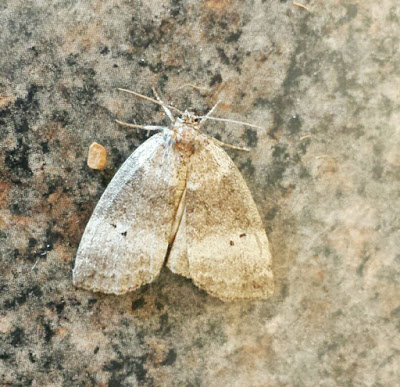There's a bit of everything in this blog post, so I hope you see something that interests you!
I'll start with not everyones favourite, but one of mine - my first juvenile Yellow-legged Gull of the year. Large gull numbers have been low so far this July on the Axe, with the Exe having had Yellow-legs since the 1st of the month. I had my first juvenile large gulls on the Estuary on Saturday, but frustratingly they were both Herring Gulls. Yesterday though I had a feeling the damp and dreary conditions would produce the goods, and it did...


What a beaut! As you can see it was distant (425 metres to be precise!), but it was such a strikingly pale bird that this really didn't matter when it came to the identification. I'd say this is probably as pale as they come and many are darker (see
THIS BIRD Tim Worfolk had yesterday on the Exe), but I really love the ones like this, they are almost Great Black-backed like. In early July juv
Herring Gulls are at their darkest, so a bird this pale needs closer inspection. But it's not just the paleness that makes this a
Yellow-legged, notice the dark eye mask, hefty size, long wings, plain dark tertials with white tips and the overall dark chocolate brown colour to the mantle/scapular feathers (usually more grey-brown or grey in Herring). This latter feature isn't often spoken about but I find it very useful, although juvenile Lesser Black-backed Gulls can be the same colour so beware!
In other bird news I bumped into some more Crossbills last Thursday with Richard Phillips, a nice flock of ten at Trinity Hill. And this morning I gave Black Hole Marsh a quick look over, plenty of birds but nothing special; 450+ Black-headed Gull, 34 Little Egret, nine Lapwing, six Common Sandpiper, three Dunlin, three Kingfisher and two Teal.
Now for insects, and I had an excellent catch of 244 moths of 54 species last Friday. There was a lovely variety, and some excellent numbers including an impressive 33 Elephant Hawkmoths! Only one immigrant though, but it was quite a rare one...
 |
| Clancy's Rustic - my fourth here but all the previous have been during the month of October. |
Some of the other notables included...
 |
| Scallop Shell |
 |
| Brown-tail |
 |
| L-album Wainscot |
 |
| Privet Hawkmoth - don't catch many of these here. |
With my wedding ring on full show in the above photo, I must just mention that unbelievably it is already our one year wedding anniversary! Can't believe how quick that's gone, I do hope life slows down a bit so I can savour it some more. I mean crikey I'm 30 later this year...
Back to insects, and here's a couple more pics to complete this post...
 |
| Mating Large Red Damselflies |
 |
| One of five Glow Worms Bun managed to track down on patch last week, I saw this one on Friday night. |





























